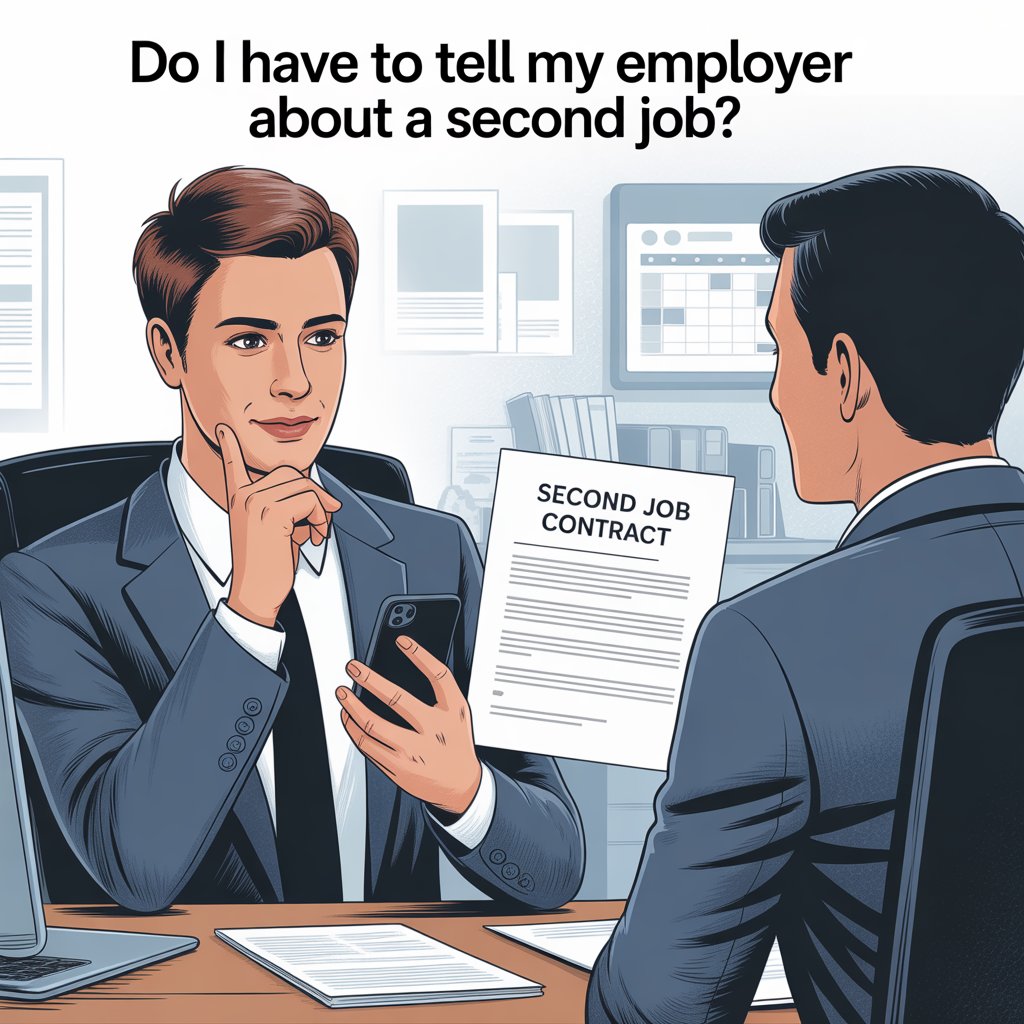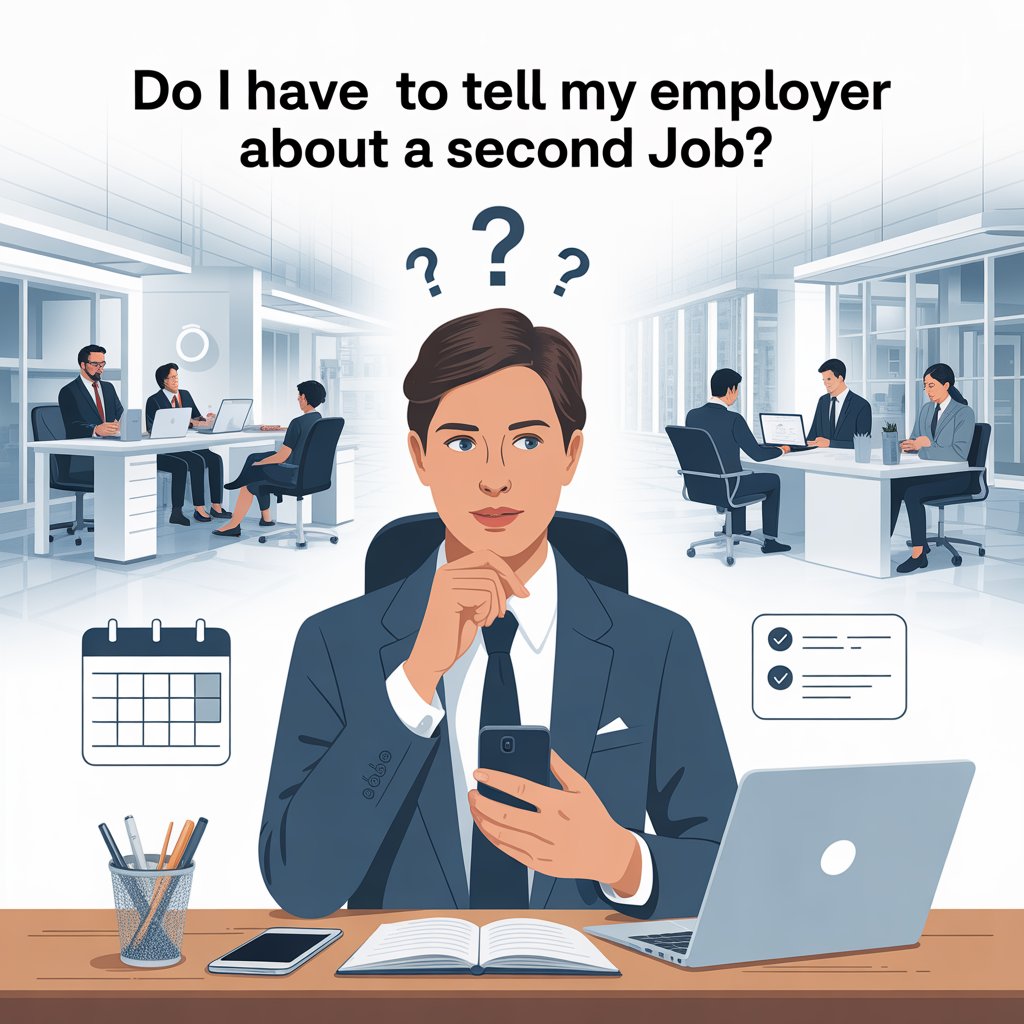A letter of introduction for a job application is basically a quick way for job seekers to make a memorable first impression on potential employers. It gives applicants a chance to introduce themselves, share a bit about their career background, and make a case for why they’d be a great fit for a specific role. When it’s done right, a letter of introduction can make the difference between getting noticed or getting lost in the pile.

Unlike a resume, this type of letter feels more personal and can help someone stand out from a crowd of other applicants. If you can highlight your strengths and show genuine interest in the job, you’re halfway there. If you want to dig deeper into what makes a letter of introduction work, there are some helpful guides on Indeed and Teal.
Key Takeaways
- A letter of introduction can help you grab an employer’s attention
- Spotlighting your strengths and skills is crucial for making a good impression
- Personal, clear letters tend to get better results
What Is a Letter of Introduction for Job Application?
A letter of introduction for a job application is how a job seeker makes first contact with a potential employer or professional connection. It’s not just a template you copy-paste; it’s meant to give people a snapshot of who you are and what you’re after, all in a professional, direct way.
Differences Between a Letter of Introduction and a Cover Letter
A letter of introduction is all about presenting yourself (or sometimes someone else) to a new contact—maybe someone at a company you like or just in the same industry, even if there’s no job opening at the moment. The idea is to start a professional relationship and highlight your key skills or interests. You might use this to introduce yourself, or to introduce a friend or colleague.
A cover letter, on the other hand, goes hand-in-hand with your resume and is sent in response to a specific job posting. It’s more targeted, explaining why you’re a good fit for that exact role, and is usually addressed to the hiring manager.
If you want to see a side-by-side comparison, check out this overview of the differences.
Here’s a quick table to sum it up:
| Type of Document | Main Purpose | When Used |
|---|---|---|
| Letter of Introduction | Introduce yourself or someone else | For networking or building connections |
| Cover Letter | Respond to a job posting | To apply for a specific job |
When to Use a Letter of Introduction
You’d use a letter of introduction when there’s no obvious job opening, but you still want to make a connection or let a company know you’re interested. Maybe you’re asking for an informational interview, some career advice, or hoping for a referral.
It’s also handy if you’re introducing a colleague or friend to someone at a company—think of it as networking, not applying for a posted job.
For instance, you might send this kind of letter to a company you admire, an industry leader, or a recruiter. Email works just fine for this, especially if you’re looking to grow your network. Curious about more ways to use a letter of introduction? There’s a good rundown on how to use it for career moves.
Essential Components of a Letter of Introduction
A solid letter of introduction is pretty structured, but not in a stiff way. Each section has a job: help the reader quickly figure out who’s reaching out and what they want.
Contact Information and Greeting
Start with your contact info: name, address, phone, email—the basics. Usually, this stuff goes in the top left corner.
Then comes the date and, if you know it, the recipient’s contact details. If you can address the letter to a real person, do it—it’s always better than something generic.
John Doe
123 Main Street
City, State ZIP
john.doe@email.com
555-555-5555
Date
Ms. Jane Smith
Company Name
Company Address
After that, use a formal greeting. “Dear [Name]” works best. If you can’t find a name, “Dear Hiring Manager” is fine, but try to avoid “To Whom It May Concern”—it just feels cold. Keep the tone friendly but still professional. If you want more nitty-gritty on formatting, here’s a guide.
Introductory Paragraph
The first paragraph is your opener. Say who you are and why you’re writing. If it’s for yourself, share your job title or a bit of background. If you’re introducing someone else, mention their name and how you know them.
Keep it short and to the point. For example:
“My name is John Doe, and I am writing to introduce myself as a marketing professional interested in opportunities at your company.”
If you have a mutual connection, mention them right away—it builds instant trust. Be clear about your goal so the reader knows what’s coming. This intro section is where you set the tone: professional but approachable.
Body Paragraphs
Here’s where you show what you (or the person you’re introducing) can bring to the table. Focus on relevant skills, experiences, or achievements that match what the company or role might need. Give examples if you can, but don’t just repeat your resume.
Bullet points are your friend for highlighting key stuff:
- Led a team of five in a successful marketing campaign
- Increased social media engagement by 30% in six months
- Experience with digital marketing tools like Google Ads and Mailchimp
Keep the language simple and real. Instead of rehashing your resume, share a quick story or two. The idea is to show genuine value and make it clear why you (or your friend) would be a good fit. Need more inspiration? Check out this what to include guide.
Closing Paragraph and Call to Action
The closing paragraph is where you wrap things up and make a polite ask. Thank the reader for their time and say what you hope happens next.
You could:
- Ask for a meeting or call
- Request info about open roles
- Invite them to look at your attached resume
Keep it brief and courteous. For example:
“Thank you for considering my introduction. I would welcome the chance to discuss possible opportunities with you.”
End with a professional closing, like Sincerely or Best regards, and your full name. This part shows respect and nudges the recipient to take action. If you’re stuck on how to sign off, here’s a quick outline on endings.
How to Write a Compelling Letter of Introduction
A compelling letter of introduction should make it obvious why you’re a good fit. It’s about connecting your unique skills and experience to the company and showing what you can actually bring to the table.
Tailoring the Letter to the Job Description
Don’t send the same bland letter everywhere. Read the job posting closely and pick out the key requirements. Use their language—job titles, skills, qualifications. It shows you’re paying attention and actually care.
Jot down the main qualifications the employer wants, then weave those into your letter. Skip the generic stuff. The closer you align your strengths to what the company’s after, the more likely you’ll stand out.
Highlighting Skills and Experience
Pick two or three top skills or experiences that really match the job. If they want teamwork and problem-solving, give specific examples from past jobs or school projects.
Bullet points can help here:
- Team leadership: Led a student group to finish a research project on time.
- Problem-solving: Handled customer complaints quickly at a retail job.
Numbers help too. If you can say “increased sales by 15%,” it’s way more convincing.
Demonstrating Value to the Employer
You want to show how you’ll actually help the company. Connect your personal skills and experience to what the company cares about. If they’re all about innovation, mention a time you created a new process or idea.
Do a little research on the company and mention something specific about them—it shows you’re genuinely interested. And, yeah, proofread before you send anything. Typos can ruin an otherwise great impression.
This approach keeps your letter focused, relevant, and shows you’re worth considering. If you need a template or example, there’s a solid letter of introduction guide online.
Showcasing Qualifications and Personality
A strong letter of introduction doesn’t just list your background—it shows what makes you different. Education, skills, goals, and even your quirks or values can all help you make a memorable first impression.
Presenting Relevant Qualifications and Education
Highlighting work experience and education gives employers a sense of how someone might fit into the role. It’s worth mentioning specific degrees, certifications, or training that actually connect to what the job needs.
Say, for instance, “She holds a Bachelor’s degree in Marketing from the University of Michigan”—that’s a clear way to show both background and relevance. Toss in a few technical or soft skills—maybe you’re an Excel whiz or thrive on teamwork—and suddenly you’re sounding a lot more credible.
It helps to draw a line between those qualifications and the work environment you’re aiming for. Did you intern somewhere similar? Get recognized for something you did? Those details matter. Keep it straightforward and factual—no need to oversell, just let your strengths speak for themselves. If you want more steps or examples, there’s a handy guide here on writing a professional letter of introduction.
Demonstrating Career Goals and Mission Statement
Laying out clear career goals tells employers what you’re aiming for. A letter might simply state, “He is seeking to use his communication skills to help organizations grow and improve customer relationships.” It’s direct and gives a sense of purpose.
Dropping in a personal mission statement can show what you value. Maybe something like: “Her goal is to promote teamwork and honesty in every role she takes.” If you can tie in a quick story or past achievement that lines up with those goals, even better.
Letting a bit of personality through—writing in your own voice, mentioning interests that actually matter to the job—signals you’re not just qualified, but also genuinely interested in the company’s vibe. If you’re curious about how to do this without sounding forced, check out this guide on showing personality in your cover letter.
Establishing Connections with the Employer
First impressions aren’t just about listing credentials. The best letters of introduction show you’ve done your homework on the employer, build a bit of trust, and hint at how you’d fit in.
Addressing the Hiring Manager
Whenever you can, address your letter straight to the hiring manager. Using their name—rather than a generic “To Whom It May Concern”—shows attention to detail and that you put in the extra effort. It’s a small thing, but it helps.
A formal greeting like “Dear Ms. Williams” personalizes things. It also signals you took the time to look up who’s who at the organization. If you’re not sure of the name, don’t be afraid to do a little digging on LinkedIn or the company’s site.
A strong opening gives a snapshot of who you are and what you do. Mention why you’re reaching out and connect your experience to what the company needs.
Leveraging Networking and Referrals
Building a personal connection can really boost your letter’s impact. If you’ve got a mutual contact or heard about the job from someone inside, mention it early.
A referral from someone the employer trusts goes a long way. Even a quick line like “I was referred by John Smith, who thought my background would fit your team” does the trick.
Adding a bit about your shared contact and their role in the organization can make the introduction warmer and more memorable. It’s these little touches that help you stand out.
Referencing Organizational Fit and Collaboration
Letters of introduction should make it clear why you’d fit the company’s culture. Explaining how your skills match what the employer is after shows you get what they’re about.
You can show you value collaboration and teamwork by sharing a story about a group project or a time you worked across teams. Mentioning your openness to working with different types of people is a plus, too.
Something like, “At my last job, I partnered with sales and technical teams on process improvement,” is specific and connects your experience to the new role. It’s all about showing you’re ready to help the organization succeed.
Polishing and Formatting Your Letter of Introduction
The way your letter looks and reads matters—a lot. A clean format and careful review can make you look more professional and help your message land.
Formatting Guidelines and Best Practices
Stick with a standard business letter format: header with your contact info, date, and the employer’s details up top. Open with a formal greeting using the recipient’s name if you’ve got it.
Choose a no-nonsense font—Arial, Times New Roman, something easy on the eyes at 11 or 12 points. Margins around one inch keep things tidy. Short paragraphs help the reader avoid getting lost in a wall of text.
Try to keep it to one page. If it drags on, it’s less likely to get read. Use bold or italic text sparingly—maybe for names, job titles, or a skill worth highlighting. Drop the job title and company name in early on; it personalizes your message, as most letter of introduction guides suggest.
If you’re printing, leave space for a signature. If it’s email, a digital signature or just typing your name works. Always double-check that your contact info is spot-on.
Proofreading for Clarity and Professionalism
Proofreading isn’t just about catching typos. You’ll want to look for grammar slips, awkward sentences, or anything that doesn’t quite sound right. Reading the letter out loud or using a digital tool can help you spot issues.
Make sure each paragraph has a point and that things flow naturally. Trim the fluff and ditch confusing phrases. The tone should match a professional résumé or cover letter—so keep it polished, not chatty.
Double-check that each sentence is actually saying something useful about your qualifications or intent. If you spot repetition, nix it. If you can, get a friend or colleague to look it over—fresh eyes catch what you might miss.
Compare your letter to the job description and your résumé. Make sure all the details match, and there’s nothing outdated or off-topic. A few final checks can make a big difference in how your application comes across.
Submitting and Following Up on a Letter of Introduction
Sending out a letter of introduction is a big step in the job hunt. Knowing when and how to follow up shows you’re both interested and organized. Being ready ahead of time makes things smoother if you get called for an interview.
Methods of Submission
Most folks send their letter of introduction by email these days—it’s quick, and employers expect it. Use a straightforward subject line, like “Introduction for [Job Title] Application.” Attach your letter as a PDF or Word doc to keep the formatting intact.
If you’re at a job fair or networking event, handing over a printed letter can make you memorable. Go for good paper stock and make sure your contact info is clear. Some companies have online portals for uploads—always check the employer’s site for their preferred way to receive materials.
Before you submit, give your letter one last read for spelling and grammar. If you can, address it to a specific person—it shows you care enough to find out who’s on the other end. And always focus on why you’re a strong match for the job.
Following Up with Potential Employers
Following up can help you stay on the employer’s radar. Wait about three to five business days after sending your letter if you haven’t heard back. That gives them a little breathing room to review your stuff.
A short, polite follow-up email goes a long way. Thank them for considering your introduction and briefly remind them of your key skills. If you handed off your letter at a career fair, a quick follow-up a few days later shows you’re still interested.
Keep your message brief, friendly, and focused on what you bring to the table. Persistence is good, but don’t cross into pushy territory. Regular, low-key follow-ups can keep you top of mind, as suggested by Indeed and Resume Trick.
Preparing for the Interview Process
If an employer gets in touch, it’s time to prep for a potential interview. Dig into the company and the job role. Brush up on common interview questions in their industry.
It’s smart to review your original letter of introduction and résumé beforehand—keeps your story straight and helps you talk confidently about your skills. Practice sharing examples that show off your leadership, teamwork, and growth.
If you met the employer at a career fair, remember the company names and contacts you chatted with. Being organized and prepared leaves a strong impression and shows you’re ready to hit the ground running.
Letters of Introduction for Specific Situations
Different jobs and hiring scenarios sometimes call for a different approach in your letter of introduction. Some letters lean into skills for a particular role, while others put relationships or recommendations front and center.
Teaching Job Applications
For teaching jobs, a letter of introduction usually needs to show off both your qualifications and your passion for education. Schools want to see your teaching philosophy and classroom chops. Mention the grade levels or subjects you’ve taught, certifications, and any tech or classroom management skills.
Explain why you want to join that specific school or organization—it matters. Teachers might also highlight measurable results, like improved test scores or creative lesson plans. To stand out, consider adding a quick list of key skills:
- Classroom management
- Familiarity with learning standards
- Communication with parents or guardians
If you’ve got extra certifications—ESL, special education, that sort of thing—definitely include them.
For more tips, check out this guide on writing a strong letter of introduction for job applications.
Referral-Based Introductions
Referral-based letters of introduction lean on a mutual connection to boost your chances. These usually kick off by naming who referred you, then explain how they know both you and the employer, and why they think you’re a good fit.
A solid referral letter is specific. It should cover:
- The referrer’s name and how they know both parties
- The applicant’s main skills or qualities
- What the applicant can bring to the team
Referral letters often get applications noticed because they build trust from the start. They’re especially useful in networking-heavy fields.
You can find more details and examples in these letters of introduction guides.
Frequently Asked Questions
A letter of introduction for a job application is your chance to show off your background and the value you bring. The format is pretty straightforward, but it can shift a bit depending on the job and your own experience.
How do you compose a compelling self-introduction in a job application letter?
Start with a polite greeting and a clear statement of why you’re writing. In those first lines, share your current role or background and what’s motivating you to reach out.
Make sure to mention skills or experiences that tie directly to the job. The tone should stay professional, but don’t be afraid to let a little personality come through.
What key elements should be included in a professional introduction letter for a job?
A strong introduction letter opens with your contact info, then the date and the recipient’s details. After a greeting, introduce yourself and give a quick rundown of your skills and experiences relevant to the job.
Wrap up with a polite closing and invite further conversation. For more pointers, here’s a guide on writing a letter of introduction.
Can you provide a guideline for writing an effective letter of introduction for a teaching position?
Start by sharing the subject and grade level you’re aiming to teach. It’s a good idea to mention your teaching credentials, degrees, or any hands-on classroom experience you’ve picked up along the way.
If you’ve got examples of lesson planning, classroom management, or maybe a knack for bilingual teaching, don’t be shy—bring those up. Wrap things up by inviting the reader to chat further about the teaching role.
How is a letter of introduction for a student applying for a job structured differently from other job applications?
For students, these letters tend to lean heavily on academic achievements, school projects, or extracurriculars—since actual job experience might be a bit thin. It’s totally fine (expected, even) to talk about your personal strengths and that drive to learn new things.
The structure doesn’t really change, but the spotlight shifts to what you’ve been up to in school instead of the work world.
What is the proper format for a formal letter of introduction for employment purposes?
You’ll want to kick things off with your address, the date, and the recipient’s address at the top. After a greeting, get into why you’re writing and share a bit about yourself.
Finish up with a thank you and your signature. If you need templates or want to see how others have done it, you can check out sample formats or this comprehensive guide to letter structure.
Could you outline the differences between a letter of introduction and a cover letter?
A letter of introduction is usually meant to connect two people—maybe for networking, or just as a referral. It’s not really tied to a specific job opening.
A cover letter, though, goes along with your resume when you’re applying for a particular job. It’s your chance to explain why you’re actually a good fit for that role (hopefully, anyway). If you’re curious, here’s a pretty clear breakdown of cover letter differences.










